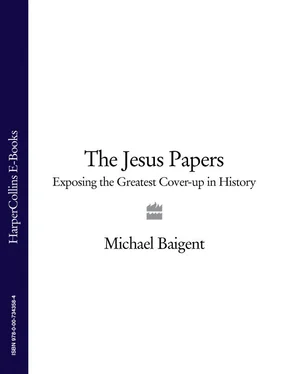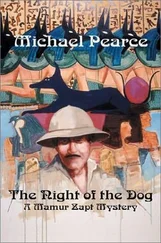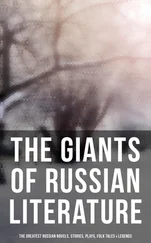But the Jews had not yet given up hope that they might regain their independence, either through military prowess or from divine intervention—or both. Almost sixty years after the destruction of the Temple, during the rule of the emperor Hadrian, a second attempt to buck Roman authority was made.
This attempt had been well planned over a long period of time. The strategy needed to be developed in great secrecy. So a network of underground bases was constructed in subterranean caverns both natural and man-made. At least six such sites have been found in the Judaean foothills; one at Ailabo in Galilee had a purposefully excavated cavern beneath the ground sixty-five meters long, with vents in the roof that let in light and air. 30 Places such as this served for both planning and training. Those in charge knew that they had to avoid the mistakes of the earlier war, in which the Zealots had allowed themselves to be trapped behind the defensive walls of towns and cities only to be picked off and destroyed, one by one, by Roman armies that were masters of siege-craft. This time they intended to attack the Romans fast and hard and then disappear back into their underground redoubts just as swiftly; they saw mobility as the key to victory.
It is important to note that this time the Jewish fighters were united under a single strong leader named Simon Bar Koseba, later to become known as Bar Kochba—“the Son of the Star,” revealing his messianic status. He too had the prophecy from Numbers 24 applied to him (“a star from Jacob takes the leadership, a sceptre arises from Israel”), and so, it would seem, he must also have carried the royal blood of David in his veins. Professor Robert Eisenman, a historian of the Dead Sea Scrolls, is intrigued by the possibility that Simon was related not just “figuratively but physically” to earlier messianic leaders in Judaea. 31
Bar Kochba recruited military experts from overseas. Lists of names in Greek have been found, each name carrying the title Adelphos , or “Brother,” like the later chivalric orders such as the Templars or the Knights of St. John. 32 Here were men with military experience who had come from the Jewish diaspora beyond Judaea where Greek was spoken and Aramaic or Hebrew unknown. These same men either served on the planning staff or, by virtue of their experience with the Roman forces, helped with the training of the secret Jewish army.
Bar Kochba knew that his men were facing the best disciplined army in the world with a potential manpower far exceeding his own: it has been estimated that the Roman standing army topped 375,000 well-trained men. There were two legions in Judaea, the Sixth and the Tenth, providing roughly 12,000 men together with an equal number of auxiliaries. Additionally, in the surrounding Roman provinces of Syria, Arabia, and Egypt, there were another five to seven legions and auxiliaries. The Jews could, at the most, raise 60,000 men, none of whom would have had military experience. Training was a necessity, and Bar Kochba devoted much time and effort to it.
He and his men needed weapons. So they devised an inventive way of ensuring a supply that is described by the Roman historian Dio Cassius, writing from A.D. 194 to 216. Because many or most of the workers in the arms industry in Judaea were Jewish, “they purposely did not forge up to standard those weapons which they had been ordered to furnish, so that the Romans might reject them, and they might thus have use of them themselves.” 33
The war broke out in A.D. 131 and was immediately successful. Roman civilians fled Jerusalem and the Tenth Legion retreated. The Twenty-second Legion from Egypt is unaccounted for in the military records of the time. It is assumed that it was rushed from its base in Egypt to Judaea but was there overwhelmed and totally annihilated. Jerusalem was recaptured from the Romans, its walls were repaired, and a Jewish civilian administration was established. For almost two years Judaea was free of Romans. But, of course, the Romans were gathering soldiers in order to return with overwhelming force.
This time Hadrian himself was in command. With him was the former governor of Britain, Julius Severus, whom he considered the finest of all his generals. In A.D. 133, nine, perhaps twelve, Roman legions and auxiliaries drawn from as far away as Britain—some sixty thousand to eighty thousand soldiers—invaded Galilee from the west and from across the Jordan river in the east. But they found it tough going. The Jewish fighters mounted a very flexible defense. The former high-ranking army officer Professor Mordechai Gichon wrote of Bar Kochba’s long-term strategy: “The tangible Jewish hope lay in drawing out the war long enough to bait hostile forces from within and without, to take up arms, and to exhaust the Roman will to win this war at any cost.” 34 But they lost. Simon Bar Kochba was killed in the summer of A.D. 135 while defending the town of Bethar. His great campaign was over.
Hadrian, wanting to eradicate Judaea from memory, changed the name of Judaea to Palaestina (now Palestine). But two generations later, the population was finally granted considerable autonomy—including being excused from “any duty that clashes with the observance of their religious rules and beliefs.” 35
It seems that the Romans still recalled the rivers of blood that their reconquest of Judaea had cost. And it still hurt.
I became friendly with Mordechai Gichon in Israel during a period when I was regularly involved in archaeological work with Robert Eisenman and his team from California State University in Long Beach. Gichon’s extensive knowledge of Bar Kochba fascinated me, and he was intrigued and interested by the thesis in Holy Blood, Holy Grail , which he had read. He once took me—along with some of the students and volunteers helping our excavation efforts at the Dead Sea—to visit one of the last Bar Kochba fortresses to be taken by the Roman troops. It was a forlorn ruin near Emmaus in the Judaean foothills, halfway between Jerusalem and the coast. It had never been excavated, and Professor Gichon wanted the chance to do so. I was soon to find out why.
Under the stone-paved platform of the fortress was a warren of tunnels. After the fall of the fortress to the Romans, the defenders retreated to these tunnels, which we crawled along on our hands and knees. They would have been able to hear the Romans talking just a few feet above them. A curiosity of the site lay in the design of the cisterns: those supplying the fortress were accessible from above through a hole in the paved platform, rather like a well. But these cisterns were roughly circular and bulbous, that is, water stretched beyond the access hole for some yards underneath the paved platform. The tunnels beneath allowed the former defenders access to the edge of the bulbous cisterns out of sight of the Romans so that they were able to live beneath the fortress for some weeks, drawing water without the Romans suspecting their presence. But their main refuge was even deeper in the hill, in underground tunnels reached by only one entrance from the upper level of tunnels. The Bar Kochba fighters and their families would probably have come up only to draw water.
When the Romans finally discovered what was happening beneath their feet, they filled the cisterns with stones, destroying the water source. Then they broke into the tunnel complex and crawled in seeking to destroy the Bar Kochba fighters who had fled down to the deeper levels.
Gichon asked me to follow him as he crawled along ahead of me through the claustrophobic tunnels. We then reached one that turned down into the rocky hillside at a steep angle. It had been sealed up with stone and mortar.
“The Romans sealed this up permanently,” he explained to me. He paused for a moment. “This tunnel has never been opened. All the defenders are still down there.”
Читать дальше












